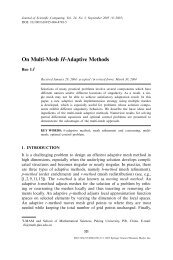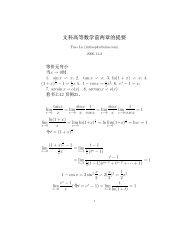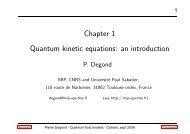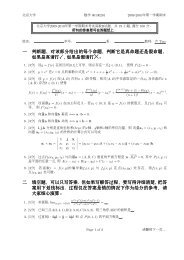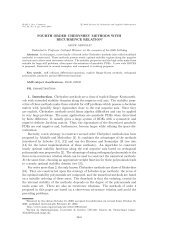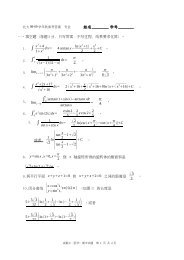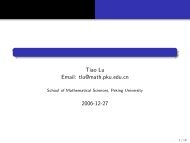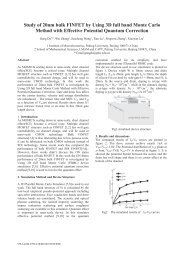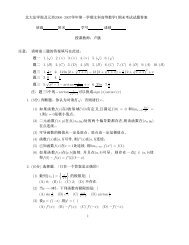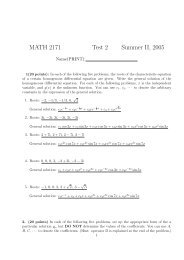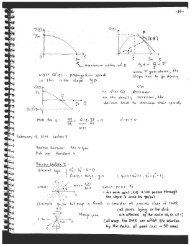Abstract
Abstract
Abstract
You also want an ePaper? Increase the reach of your titles
YUMPU automatically turns print PDFs into web optimized ePapers that Google loves.
CHAPTER 4. THEORY 104<br />
operator.<br />
4.2 Infinite-Dimesional Analysis of GMRES<br />
In this section, we will consider solving the infinite-dimension fixed point problem<br />
f(x, k) =Z(f)(x, k)+ā(x, k). This can be rewritten as (I − Z)f(x, k) − ā(x, k) =0.<br />
Applying Newton’s method to this nonlinear equation leads to solving a series of<br />
linear equations, where the linear operator needed to be inverted is I − Z ′ . Here, Z ′<br />
is the Frechet derivative of Z. Using the compactness of Z, we will now show that Z ′<br />
is a compact linear map from X to X. Letu ∈ X and {gn} be a bounded sequence<br />
in X. Since{gn} is bounded in X, then{gn} is bounded in L 2 .SinceL 2 is a reflexive<br />
space, then there is a subsequence of {gn} (which we will relabel as {gn}) such that<br />
gn ⇀ ¯g ∈ L 2 .SinceZ is Frechet differentiable, then<br />
Therefore,<br />
So,<br />
Z(u + γ¯g) − Z(f) − γZ ′ (u)¯g = o(γ)<br />
Z(u + γgm) − Z(u + γgn) − γZ ′ (u)[gm − gn] =o(γ).<br />
Z ′ (u)[gm − gn] = 1<br />
γ [Z(u + γgm) − Z(u + γgn)+o(γ)].




